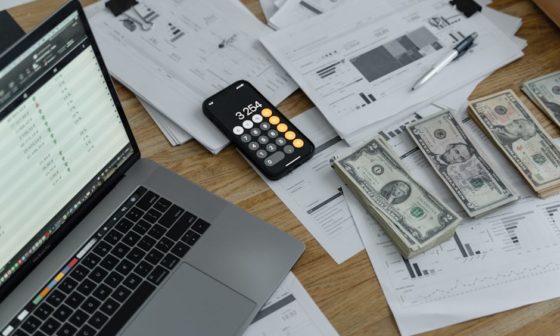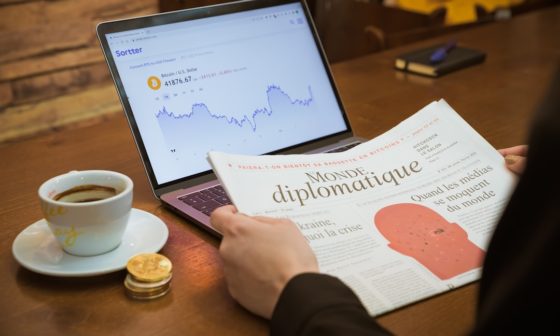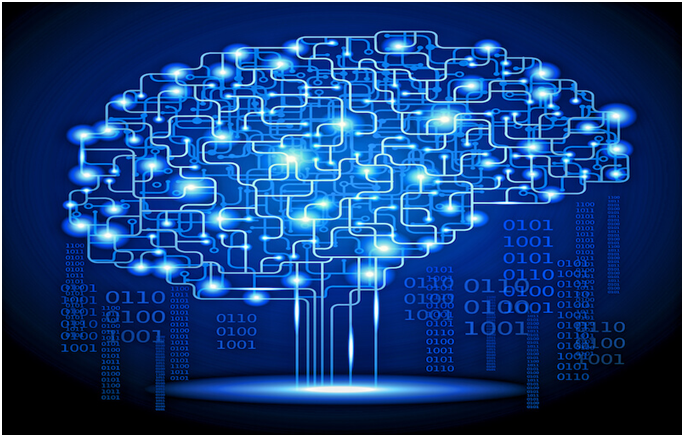
Today, machine learning is ubiquitous. Its tools are adopted by data scientists, businesses, and developers in every zone of the economy. The software made on machine learning models run manufacturing plants, make clinical diagnoses, forecast weather, and even suggest choices regarding what you should watch this weekend on Netflix.
However, its biggest impact has been on trading, perhaps. Machine learning algorithms greatly dominate trading in financial markets. While they were slow and disorganized some decades ago, today, they allow trading at a level of adaptiveness and speed that is impossible for human beings.
Consequently, trading robots have become a contemporary and standard trading tool, and algorithmic trading has gained popularity due to its human error-free and faster trading functionality.
What is Machine Learning?
Machine learning occurs to be a subdivision of Artificial Intelligence (AI) that enables a machine to learn and predict accurate results through prior experience and without much human involvement. It has touched almost every aspect of our lives, including education, defense, healthcare, finance, etc.
While the AI field broadly focuses on machine intelligence, machine learning studies technologies, which enable computers to learn from data and employ the learned knowledge to predict and make decisions.
It processes the hidden patterns of data sets from many data sources and helps train models through earlier experiences, enabling computers to learn without becoming programmed explicitly. The experience here is the training data needed for algorithms.
Besides, the major difference between earlier machines and the present-day machine learning systems is that earlier ones were human-programmed to solve a certain problem, however, present-day machines use algorithms, which make decisions by gaining from the data.
One of the consequences of machine learning is that users do not precisely know how the model operates, just that it does. There is not a rulebook, which can be read and comprehended, but a multilayered and complex set of biases and weights that produces more or less accurate results.
Machine Learning in Algorithmic Trading
Machine learning trading algorithm is very useful in optimizing the human decision-making process because it maneuvers data and predicts the upcoming market picture with outstanding accuracy.
As we know, trading is frequently affected by human emotions that serve as a huge stumbling hindrance in the way of good performance, these predictions enable traders to perform timely actions and augment their returns.
The use of computers and algorithms in trading is not a new idea. Algorithmic trading also called automated trading or algo trading has been used for trading purposes since the 1980s. It employs the use of a pre-programmed computer system, which follows a set of instructions to accomplish trade.
Common Algorithmic Trading Strategies
Some common algorithmic trading strategies are:
-
Trade Execution Algorithms
These break the trades into smaller orders to lessen the impact on the stock price. Percent of Value, Time Weighted Average Price, and Volume Weighted Average Price are common trade execution algorithms.
-
Strategy Implementation Algorithms
These algorithms execute trades based on signals that are received from present market data.
-
Arbitrage Opportunities
An example of this trading strategy is a situation in which the same stock comes to be trading at two different prices in two different markets. In this situation, this trading strategy allows buying lower-priced stocks and selling higher-priced ones.
-
Stealth/Gaming Algorithms
Enormous trades or similar other algorithmic strategies result in price movements, which can be exploited by stealth/gaming algorithms.
Algorithmic trading is a development in manual trading. Due to its great profitability, it instantly caught the eyes of traders when it was first introduced in the financial markets. However, returns from this trading declined significantly because of intense competition. It presents fewer benefits when many are doing it.
The traditional algorithms, made by data scientist and programmers, rely on ‘if and then’ rules and cannot upgrade themselves through learning historical data.
Today, capital market firms deploy machine learning to create algorithms, which don’t rely on rule-based systems. Machine learning algorithms automatically learn new trade patterns without the need for human intervention.
Ways to Use Machine Learning for Trading
Some important applications that give us information about how machine learning is exactly used in trading are:
-
Pattern Formation
One of the main jobs of machine learning algorithms is to deploy huge historical data and predict the prospective picture accurately. Luckily, this job of machine learning interrelates with the basic aspect of trading.
Technical traders usually search for time and space-restricted localized patterns and ponder on ways to maneuver these patterns for a bigger return. But these patterns change all the time, and the process of looking for these patterns involves a considerable amount of energy and time.
Machine learning techniques help in locating the patterns, which can be connected with the experience and intuition of traders to make accurate decisions.
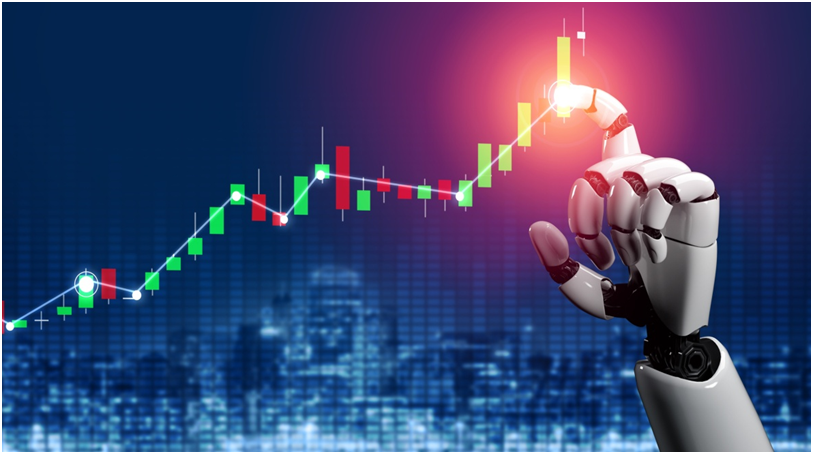
However, there is a limitation of machine learning in finding patterns i.e. many traders use it in the same market for the same motive. In other words, there’s a huge competition in the financial markets where patterns identified by one trader can be at the disposal of others. As a result, even if a trader uses machine learning to find patterns, they have to adapt continuously or act fast as patterns disappear immediately because of high competition.
-
Predictive Trading through Sentiment Analysis
Several factors influence the stock market, such as the sentiments of humans. Sentiments are instrumental in stock price movements as market trends vary rapidly with human sentiments.
As a result, companies use artificial intelligence and machine learning to analyze human sentiments and predict the price based on those sentiments.
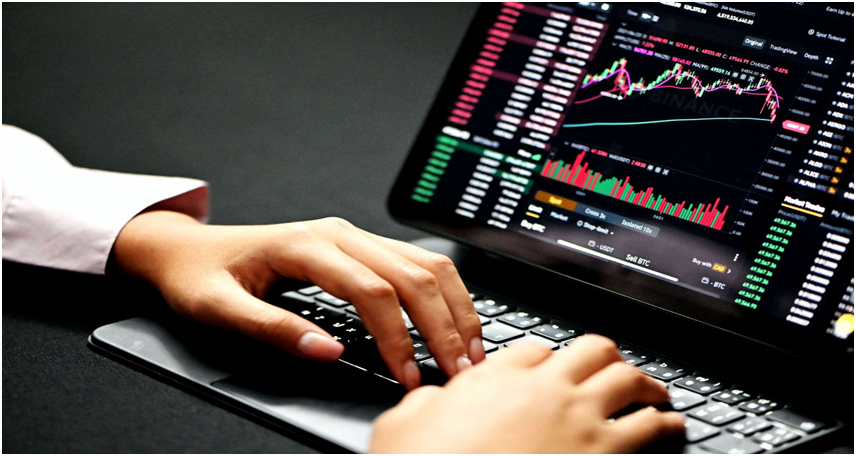
One of the potent tools for sentiment analysis is social media as it offers a platform to people to express their views freely regarding anything. The sentiment analysis is performed by leveraging NLP (Natural Language Processing) to categorize the emotions of various people regarding the stock value of a firm into three divisions, positive, negative, and neutral. NLP is a subdivision of machine learning, which allows computers to analyze and understand human language.
The stock price would likely go up if there’s an optimistic sentiment regarding the firm among people. On the other hand, a pessimistic sentiment within people can result in a fall in the stock price.
A machine learning algorithm can process various social media content such as posts, comments, and tweets of those people who usually have stakes in the financial markets. This data is further used to train a machine learning model so that it can predict the stock price in various scenarios.
-
High-Frequency Trading
With machine learning, trading has become so fast that it can be facilitated in milliseconds. For instance, high-frequency trading is complex algorithmic trading that involves accomplishing a large order in a fraction of a second. Executing several orders in such a short period does not fall in the capacity of a human being.
Traders use computers and algorithms for the automated accomplishment of orders because it needs a considerable amount of time to read the stock market trend and put bids manually. Moreover, AI-based task automation is accepted by nearly every industry.
In high-frequency trading, numerous feature-creation methodologies and machine-learning algorithms are applied. SVM is their most common example. It operates by making a separation line in the data and entails training the models to allow them to identify features, which reflect an advancing decrease or increase in the market pricing and bid.
-
Assessing Risks and Using Chatbots in Trading
Artificial intelligence and machine learning have revolutionized trading by introducing several useful applications like chatbots. Chatbots not only communicate with traders but also provide them with a history of financial statements along with other helpful information. For instance, a trader may ask the chatbot about trading offers. The chatbots update him about the present prices and also give information about possible offers by analyzing the responses of other traders. This information can be frequently asked questions (FAQs), notifications related to vertical price movements, account statements, and real-time quotes.
Chatbots perform much better than human beings when powered by a machine learning algorithm. Moreover, the striking feature of chatbots is that they can learn and process all the previous conversations and accordingly upgrade themselves.
Besides making the decision-making process easier and faster through automated chatbot services, machine learning in algorithmic trading can process huge volumes of data to assess the risks and predict future variations in the financial market. We all know that accurately assessing the risks is vital for becoming successful in trading. Traders can use these insights to take careful actions to mitigate the effects of the risks.
Companies that use Machine Learning for Trading
Numerous big firms are employing the power of machine learning and AI to boost their profits. Below are some examples:
- Morgan Stanley – Based in New York, USA, Morgan Stanley is a big financial services company and multinational investment bank that use robo advisors powered by ML to guide investors regarding their wealth. The machine learning algorithm helps investors make informed decisions based on actual data.
- Tino IQ – Headquartered in Campbell, California, this company utilizes machine learning algorithms to study stock prices across the financial markets. The algorithms identify patterns of the stocks, and based on these patterns, the store gets listed with sell and buy recommendations in the Tino IQ app.
- Numerai – An AI-powered hedge fund in San Francisco, USA, Numerai employs machine learning algorithms to operate open-source company trades.
- Wealthfront – Wealthfront is an automated investment service application that utilizes machine learning to give investment advice to investors at reasonable costs.
- Kayout – This is an investment platform that connects the powers of big data and machine learning to offer valuable insights regarding stock trading. Traders can see ‘K scores’, which range from 1-9, and are regularly updated to make better selling and buying decisions.
Conclusion
The establishment of algorithmic trading has brought a massive change in the financial industry. Today, the advantages of machine learning and AI have brought unlimited opportunities.
Lagging in adopting machine learning strategies poses a considerable threat to investment companies and traders. Big companies are immensely embracing machine learning algorithms to trade.
By availing of its advantages, we can analyze human sentiments, assess investment risks, and identify the patterns of the market. As a result, companies should upgrade themselves by adopting new artificial intelligence and machine learning tools because the application of these trading technologies will continue to prosper in the upcoming future.





